Understanding and Addressing Sleep Challenges with ABA
Sleep disturbances are notably prevalent among children with autism spectrum disorder (ASD), impacting nearly 80% of this population. These difficulties, which include prolonged sleep onset, frequent night wakings, and early waking, not only affect the child's health and well-being but also exacerbate core ASD symptoms and increase daytime behavioral problems. Applied Behavior Analysis (ABA), a scientifically supported approach to behavior modification, offers promising strategies for addressing these sleep issues by targeting learned behaviors and environmental factors. This article explores how ABA techniques are being leveraged to improve sleep patterns, the importance of thorough assessment, and the collaborative role of parents and therapists in implementing effective interventions.
The Rationale for Using ABA in Sleep Interventions for Children with ASD
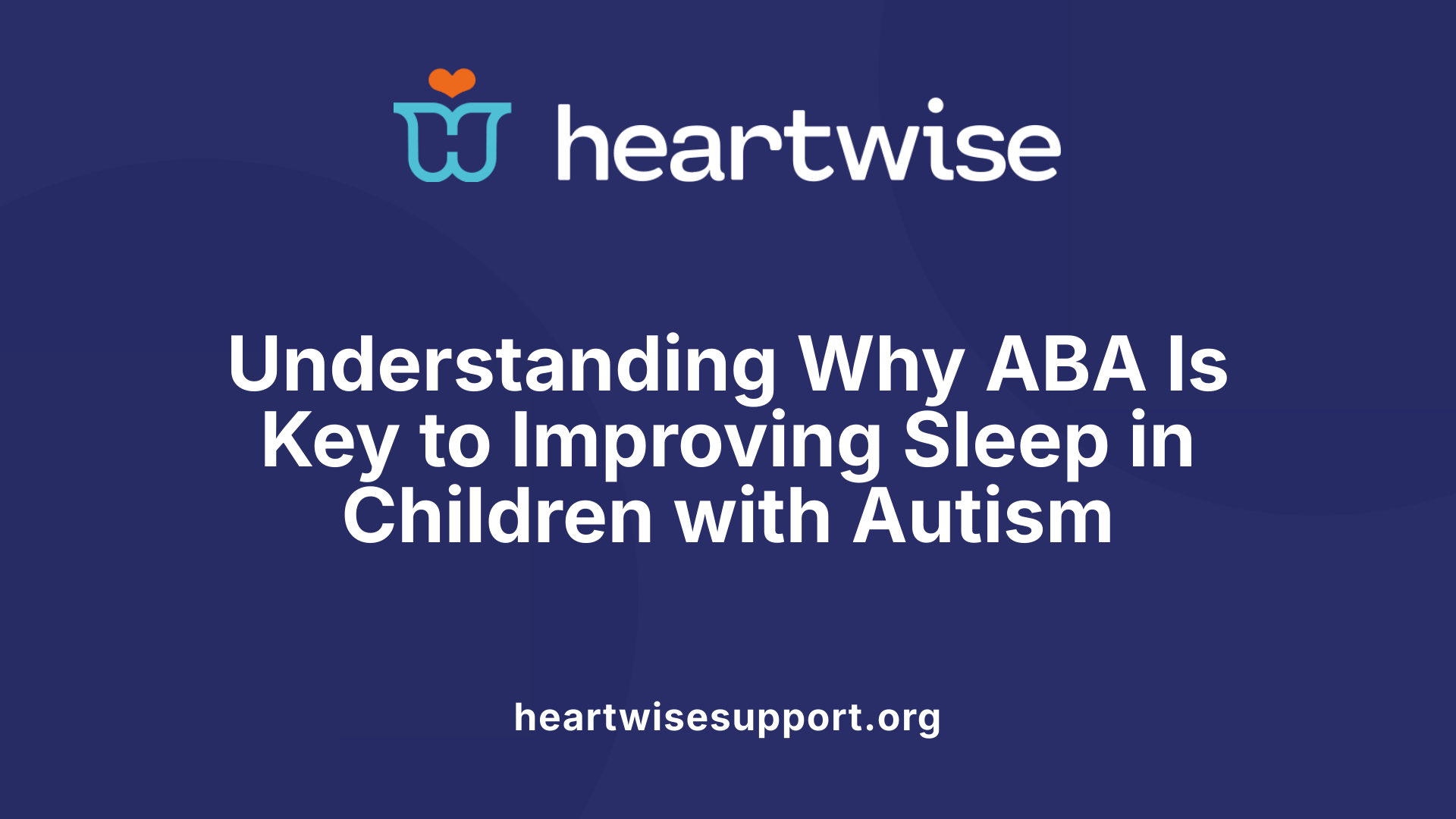 Why is ABA considered for addressing sleep issues in children with autism?
Why is ABA considered for addressing sleep issues in children with autism?
Children with autism spectrum disorder (ASD) often experience sleep disturbances at much higher rates than their typically developing counterparts. Studies suggest that up to 80% of children with ASD face sleep problems such as trouble falling asleep, frequent night wakings, and early morning awakenings. These disruptions do not just cause fatigue; they also exacerbate core ASD symptoms. Poor sleep can lead to decreased social interaction skills and increased repetitive behaviors. It can also trigger or worsen daytime problem behaviors like aggression and self-injury.
How do sleep problems relate to learned behaviors?
A foundational concept behind using Applied Behavior Analysis (ABA) in sleep interventions is the idea that many sleep difficulties are learned behaviors. This means that with the right interventions, these behaviors can be unlearned or modified. ABA techniques focus on analyzing and changing behaviors that interfere with sleep, such as resistance to going to bed, difficulty calming down, or night waking behaviors.
What initial steps are taken before behavioral interventions?
Before starting ABA-based therapy, it is important to rule out medical causes of sleep problems. Pediatric consultations help identify issues like sleep apnea or gastrointestinal discomfort, which could require medical treatment rather than behavioral strategies. Once medical issues are addressed or ruled out, assessment tools like sleep diaries, questionnaires (e.g., Children’s Sleep Habits Questionnaire), and actigraphy are employed. These tools provide detailed information about sleep patterns, bedtimes, night wakings, and daytime sleepiness.
How are ABA techniques applied to improve sleep?
ABA therapy involves several structured techniques. Establishing consistent sleep routines—such as a bedtime bath, reading, or calming activities—signals the body that it's time to sleep. Visual schedules and timers help children understand and predict bedtime activities.
Positive reinforcement encourages children to stay in bed and fall asleep independently. For example, rewarding quiet, calm behaviors at bedtime motivates children to develop self-soothing skills. Techniques like graduated extinction involve gradually increasing the time before responding to a child's night waking or resistance, helping them learn to self-soothe.
Other ABA methods include sleep fading with response cost, scheduled awakenings, and the use of a bedtime pass, all tailored to reduce sleep resistance and anxiety.
How does ABA address sensory issues and sleep resistance?
Many children with ASD experience sensory sensitivities that affect sleep, such as light, noise, or tactile discomfort. ABA therapists work to desensitize children to these stimuli through gradual exposure and environmental modifications. Teaching self-soothing behaviors and fading caregiver presence further promote independence in falling asleep.
How is progress monitored?
Progress is tracked through direct observations, sleep diaries, and sometimes actigraphy data. The therapy plan is adjusted based on this ongoing assessment, focusing on reducing night wakings, shortening sleep onset latency, and increasing total sleep duration.
What additional behavioral strategies support sleep?
In addition to routine establishment and reinforcement, functional communication training enables children to express needs appropriately, reducing disruptive behaviors at night. Improving sleep hygiene—like appropriate light levels and screen time restrictions—is also fundamental.
Summary of effective interventions and their basis
All these methods are rooted in scientific research and empirically supported. They are tailored to individual needs, making the approach flexible and child-centered. The goal is to modify learned maladaptive behaviors and develop healthy sleep patterns, consequently improving overall functioning.
| Intervention Technique | Description | Purpose |
|---|---|---|
| Consistent Bedtime Routine | Structured activities like baths or reading before sleep | Signals bedtime, reduces resistance |
| Visual Schedules | Use of visual cues to outline bedtime activities | Enhances understanding, reduces anxiety |
| Positive Reinforcement | Rewards for staying in bed or falling asleep independently | Encourages desirable sleep behaviors |
| Graduated Extinction | Gradually increasing waiting times before caregiver response | Teaches self-soothing, reduces night wakings |
| Sleep Fading with Response Cost | Adjusting sleep times gradually and removing contingencies | Supports independent sleep initiation |
| Bedtime Pass | A token system allowing limited night wakings | Carves out acceptable night disruptions |
| Sensory Desensitization | Gradual exposure to sensory stimuli causing sleep resistance | Reduces sensory-related sleep problems |
In conclusion, ABA-based approaches are a structured, flexible approach to addressing sleep issues in children with autism. Through consistent routines, reinforcement strategies, and environmental modifications, children can develop healthier sleep habits, leading to better daytime functioning and improved quality of life.
Behavioral Foundations of Sleep Improvement through ABA
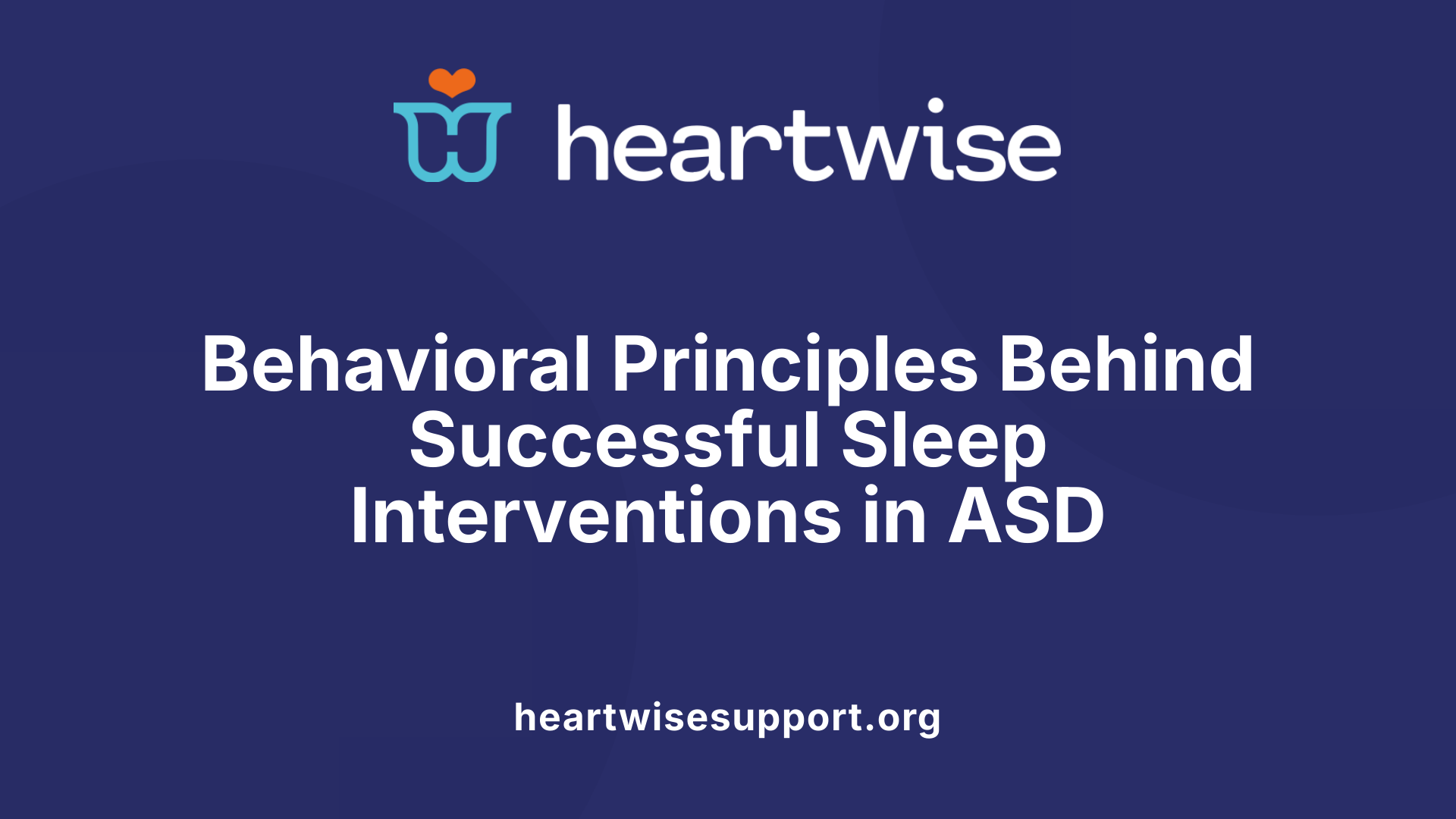
Can sleep problems in children with autism be addressed by modifying learned behaviors?
Yes, many sleep issues in children with autism are considered learned behaviors, which means they can be unlearned or modified through behavioral interventions. This approach is rooted in the idea that children develop certain sleep habits and resistance based on their experiences, but with consistent strategies, these behaviors can be reshaped to promote healthier sleep patterns.
Behavioral methods focus on reinforcing positive sleep habits and reducing problematic behaviors like resistance at bedtime or frequent night wakings. Interventions are designed to help children establish routines and behaviors that support falling asleep and staying asleep through learned cues and environmental adjustments.
What initial steps should be taken before implementing behavioral interventions?
Before starting any behavioral sleep treatments, it is essential to rule out medical causes for sleep problems. Consulting a pediatrician allows for assessment of potential underlying health issues such as sleep apnea, gastrointestinal problems, or medication side effects.
Once medical conditions are addressed or ruled out, the next step involves gathering comprehensive data through sleep logs. These logs record sleep patterns, bedtime behaviors, night wakings, and daytime naps. They serve as baseline information that helps tailor individualized interventions and monitor progress.
How do sleep logs and assessments help shape tailored interventions?
A sleep log provides detailed insights into a child's specific sleep difficulties. It helps identify patterns, triggers, and behaviors that interfere with sleep, such as resistance at bedtime, anxiety, or sensory sensitivities.
Using this data, therapists and caregivers can develop targeted strategies like establishing a consistent bedtime routine or using visual schedules. These tools reinforce predictable behaviors and help the child associate certain cues with sleep.
Furthermore, assessments like sleep questionnaires, diaries, or actigraphy provide objective data, enhancing the understanding of sleep issues. This personalized approach increases the likelihood of successful outcomes because interventions directly address each child's unique needs.
Overview of behavioral strategies employed in treating sleep issues
Several scientifically supported techniques are employed in behavioral sleep interventions:
- Consistent Bedtime Routine: Establishing predictable activities such as bathing or reading to signal that it is time to sleep.
- Visual Schedules: Using visual aids to help children understand what to expect and reduce anxiety.
- Positive Reinforcement: Rewarding desired behaviors like staying in bed or falling asleep independently.
- Gradual Extinction: Slowly decreasing caregiver intervention at night to encourage independent sleep.
- Faded Bedtime: Delaying sleep time gradually if a child consistently resists bedtime.
- Response Cost and Bedtime Pass: Using tangible rewards or passes to motivate compliance.
- Scheduled Awakenings: Waking the child gently before usual night wakings to reset sleep patterns.
These strategies aim to create a structured environment conducive to quality sleep, reducing both resistance and night wakings.
How is progress monitored and adapted?
Progress is typically tracked using sleep diaries or logs maintained by caregivers. Additionally, direct observation and, sometimes, actigraphy devices provide objective data.
Regular monitoring allows for adjustments to the intervention, ensuring it remains effective and responsive to the child's evolving needs. This ongoing process helps reinforce improvements and address any emerging challenges.
Can behavioral interventions be personalized?
Absolutely. Effective sleep interventions are highly individualized, considering each child’s unique behaviors, sensitivities, and health status. Collaboration with healthcare providers and careful data analysis ensure that interventions are tailored, flexible, and correctly targeted.
In conclusion, behavioral modifications rooted in the principles of Applied Behavior Analysis (ABA) are a powerful approach to improving sleep in children with autism. By understanding that sleep issues can be learned behaviors, caregivers and professionals can work together to establish routines, reinforce positive behaviors, and ultimately, help children sleep better.
Implementing ABA Techniques for Better Bedtime Routines
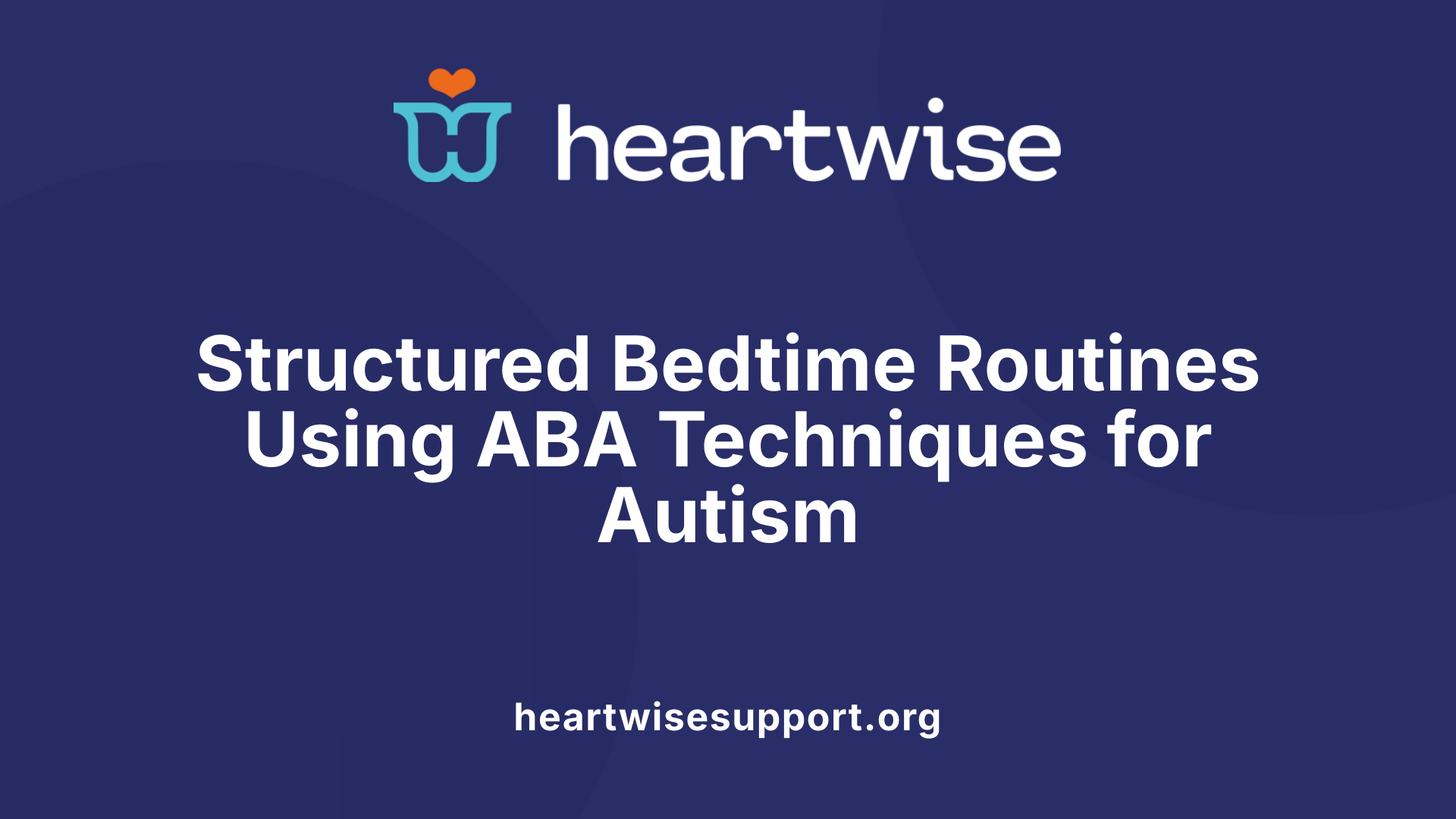
How can ABA be used to address sleep issues in children with autism?
Applied Behavior Analysis (ABA) offers practical and evidence-based strategies to improve sleep in children with autism. Central to these approaches are establishing structured, predictable bedtime routines that provide clear signals that it is time to sleep.
Creating a consistent routine helps reduce sleep anxiety and sensory sensitivities that can interfere with falling asleep. For example, calming activities like a warm bath, reading a story, or listening to soothing music can serve as bedtime cues.
Visual schedules and social stories are effective tools that prepare children for bedtime. Visual schedules display pictorial steps of the bedtime routine, helping children understand what to expect next and reducing resistance or anxiety. Social stories describe the bedtime process in simple, positive language, reinforcing appropriate behaviors and expectations.
Positive reinforcement plays a vital role in encouraging children to stay in bed and fall asleep independently. Rewarding desired behaviors — such as lying quietly or remaining in bed — with praise, tokens, or preferred activities increases the likelihood that these behaviors will recur.
Fading methods like bedtime fading involve gradually shifting the child’s bedtime to a later time within their natural sleep pattern, making it easier for them to fall asleep. Over time, the bedtime is slowly adjusted earlier, with the child successfully forming new sleep habits.
Combining these techniques with self-soothing skills training is crucial. Teaching children to comfort themselves without caregiver assistance fosters independence and reduces night wakings.
Parent training and ongoing assessment are fundamental components. Caregivers learn to implement routines consistently, respond appropriately to night wakings, and use reinforcement strategies effectively. Regular data collection helps track progress and tailor interventions to meet individual needs.
By integrating structured routines, visual supports, reinforcement strategies, and personalized fading techniques, ABA can significantly enhance sleep quality and duration. These approaches not only improve nighttime rest but also positively impact daytime behavior, mood, and overall functioning.
Techniques to Reduce Sleep Resistance and Anxiety
How does addressing sleep anxiety through systematic desensitization help children with autism?
Children with autism often experience sleep resistance and heightened anxiety around bedtime, which can significantly disrupt their sleep patterns. One effective approach to mitigating these challenges is systematic desensitization, a behavioral technique rooted in Applied Behavior Analysis (ABA). This method involves gradually exposing the child to the bedtime routine and sleep environment in a controlled, step-by-step manner.
Initially, the child’s specific fears or sensory sensitivities related to sleep are identified. For example, a child may be anxious about the dark, certain sounds, or the feeling of being alone. The therapist or parent then works to desensitize the child to these stimuli by introducing them in a non-threatening way.
This process begins with brief exposures followed by positive reinforcement when the child remains calm or completes the exposure. Over time, the exposures are increased gradually, helping the child form positive associations and reduce fear responses.
Integrating calming activities such as deep breathing, sensory calming toys, or visual supports during this process can further ease anxiety. These activities help the child learn self-soothing skills, which are crucial for independent sleep.
The systematic aspect ensures the child is not overwhelmed, increasing confidence and comfort at bedtime. Consistency and patience are vital to success, as is collaboration with healthcare professionals and parents.
The ultimate goal is to help children develop a sense of safety and predictability in their bedtime routines, thereby reducing resistance and making sleep a more positive and less stressful experience.
What strategies and methods are effective in using ABA to improve sleep in children with autism?
Effective use of ABA to improve sleep in children with autism involves establishing consistent bedtime routines and using visual cues to signal sleep time. Behavioral strategies such as graduated extinction, bedtime fading, stimulus control, and scheduled awakenings are commonly employed to promote independent sleep and reduce resistance.
Reinforcement techniques are used to encourage desired sleep behaviors, and sensory management or calming activities can help address sensory sensitivities and anxiety that interfere with sleep.
It is important to conduct individualized assessments, rule out medical causes, and collaborate with healthcare providers to tailor interventions. Combining these behavioral approaches with sleep hygiene practices and parent education can significantly enhance sleep outcomes for children with autism.
Additional Support Techniques
| Technique | Description | Purpose |
|---|---|---|
| Consistent Bedtime Routine | Activities such as baths or reading to signal bedtime | Reduce bedtime resistance |
| Visual Schedules | Use of visual cues to prepare the child for sleep | Aid understanding and predictability |
| Positive Reinforcement | Rewards for staying in bed or sleeping independently | Encourage desired behaviors |
| Fading Caregiver Presence | Gradually reducing caregiver involvement at sleep time | Promote independence |
| Sensory Strategies | Use of calming sensory inputs like weighted blankets or noise machines | Address sensory sensitivities |
| Desensitization | Gradual exposure to sleep triggers | Reduce anxiety |
Monitoring Progress and Personalization
Progress is typically monitored through sleep diaries, direct observations, and parent reports. These tools help tailor interventions, address specific issues such as night wakings or difficulty falling asleep, and track improvements over time.
ABA therapy begins with data collection on sleep behaviors, followed by targeted strategies that can include teaching self-soothing skills, modifying the sleep environment, and addressing sensory sensitivities.
Ultimately, by systematically reducing sleep resistance and anxiety through these methods, children with autism can achieve more restful and consistent sleep, which in turn supports their overall development and quality of life.
Managing Sensory and Environmental Factors in Sleep Interventions
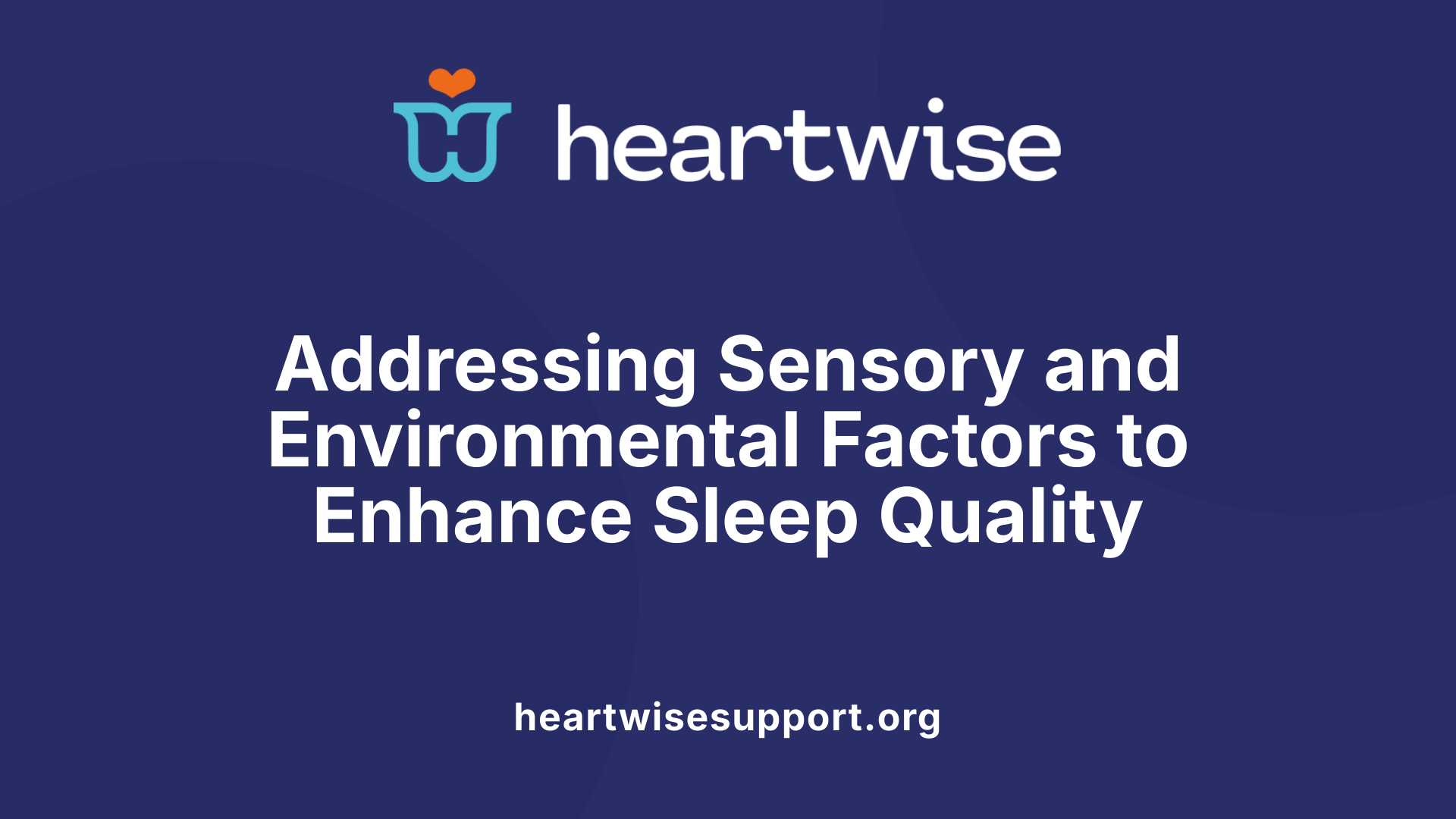
What strategies and methods are effective in using ABA to improve sleep in children with autism?
Applied Behavior Analysis (ABA) offers a range of strategies that can effectively address sleep issues in children with autism. Central to these methods is establishing consistent bedtime routines, which signal to the child that it is time to sleep. Visual cues, like picture schedules or visual timers, help children understand and anticipate sleep time, reducing anxiety and resistance.
Behavioral techniques such as graduated extinction involve softly fading caregiver presence over time to promote independent falling asleep. Bedtime fading gradually shifts sleep time to a later or earlier slot, making the transition smooth and less stressful for the child. Stimulus control techniques are employed to reinforce the association between the bed and sleep, such as only using the bed for sleeping.
Scheduled awakenings — where caregivers gently wake the child at set times — can help regulate abnormal sleep patterns and decrease nighttime resistance. Positive reinforcement plays a vital role, rewarding successful sleep behaviors with preferred items or activities.
Addressing sensory sensitivities is crucial in improving sleep. Sensory management strategies include calming sensory activities before bedtime, such as soft music or gentle rocking, and adjusting the sleep environment to reduce sensory overload. This might mean dimming lights, lowering noise levels, or providing sensory-friendly bedding.
It’s important that these interventions are individualized; thorough assessments help identify specific sensory triggers and behavioral patterns. Collaborating with healthcare providers ensures medical causes of sleep disturbances are ruled out, allowing the behavioral plan to be tailored effectively.
Combining ABA techniques with foundational sleep hygiene practices—like maintaining a consistent sleep schedule and limiting screen time before bed—further enhances sleep quality. Parent education is an integral component, empowering caregivers to implement strategies consistently.
In summary, ABA-based approaches that integrate sleep routines, behavioral strategies, sensory management, and environmental adjustments form a comprehensive framework to improve sleep in children with autism. These methods address both learned sleep behaviors and sensory sensitivities, leading to more restful nights and better day-time functioning.
Monitoring Progress and Adjusting Interventions
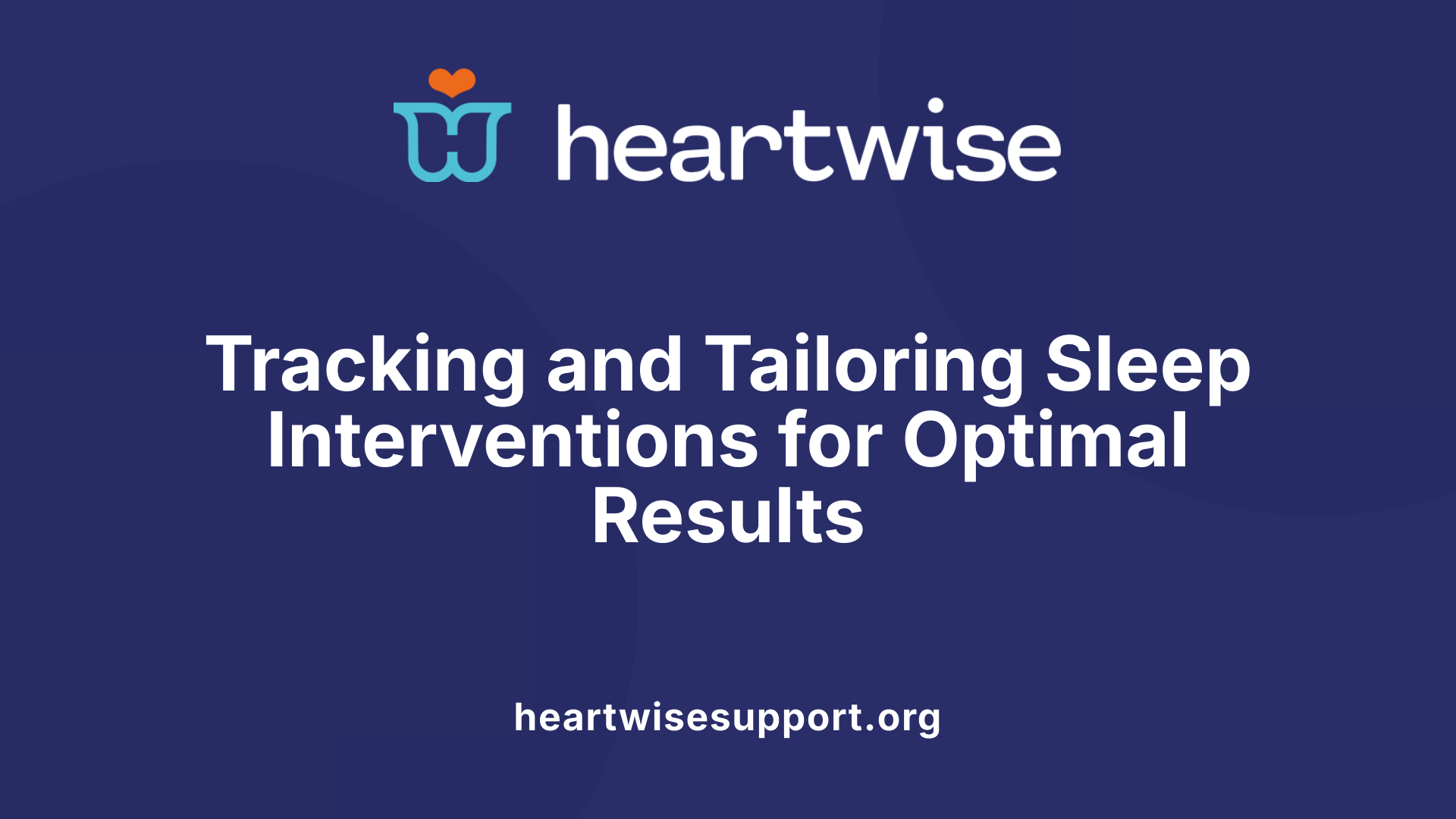
How are sleep diaries and direct observation used to collect data?
Tracking sleep patterns is a crucial initial step in managing sleep issues in children with autism. Sleep diaries and direct observation are primary tools used by behavioral therapists and healthcare providers.
A sleep diary involves parents or caregivers recording details about the child's sleep behavior over several days or weeks. This includes information such as bedtime, time taken to fall asleep (sleep onset latency), night wakings, total sleep duration, and morning wake times.
Direct observation complements diary data by allowing professionals to monitor behaviors around bedtime and during the night in real-time. Observations may focus on the child's resistance to sleep, sensory responses, or anxiety behaviors that may interfere with sleep.
Both methods generate valuable baseline data, helping to identify patterns and triggers that disrupt sleep, which then guides targeted interventions.
Why are treatment plans needed to be adaptable?
Children with autism often exhibit unique responses to interventions for sleep problems. What works well for one child may not be effective for another.
An adaptable plan allows therapists and parents to modify strategies based on ongoing progress and observations. For example, a child might initially respond well to a graduated extinction method but later show resistance, prompting a switch to another technique like bedtime fading.
Frequent monitoring through sleep diaries and observations ensures modifications address current needs, fostering better sleep outcomes. Adjustments may involve changing routines, reinforcements, or environmental modifications.
Why is collaboration with healthcare providers essential?
Before implementing behavioral interventions, it is important to rule out medical causes of sleep difficulties such as sleep apnea, gastrointestinal issues, or medication side effects. Collaboration with pediatricians and sleep specialists ensures a comprehensive approach.
Healthcare providers can perform diagnostic tests or prescribe medical treatments if needed, complementing behavioral strategies. They also assist in monitoring for any health-related issues that may influence sleep.
Engaging with a multidisciplinary team promotes a more thorough understanding of the child's needs and enhances the effectiveness of sleep interventions.
| Data Collection Tools | Purpose | Additional Details |
|---|---|---|
| Sleep Diaries | Track bedtime, wake times, sleep latency, night wakings | Usually filled over a week or more for reliable data |
| Direct Observation | Monitor behaviors and environmental factors | Conducted by therapists or trained staff during sleep routine |
| Actigraphy | Use of wearable devices to measure movement | Provides objective sleep pattern data |
| Questionnaires (e.g., Children’s Sleep Habits Questionnaire) | Assess sleep behaviors and issues | Used for initial evaluation and progress tracking |
In conclusion, a comprehensive sleep management plan for children with autism relies heavily on careful data collection, flexible strategies, and collaboration among caregivers and healthcare professionals. This integrated approach ensures that interventions are tailored, effective, and responsive to the child's changing needs, ultimately leading to improved sleep quality and overall well-being.
The Role of Parent Training and Collaboration in Sleep Improvement
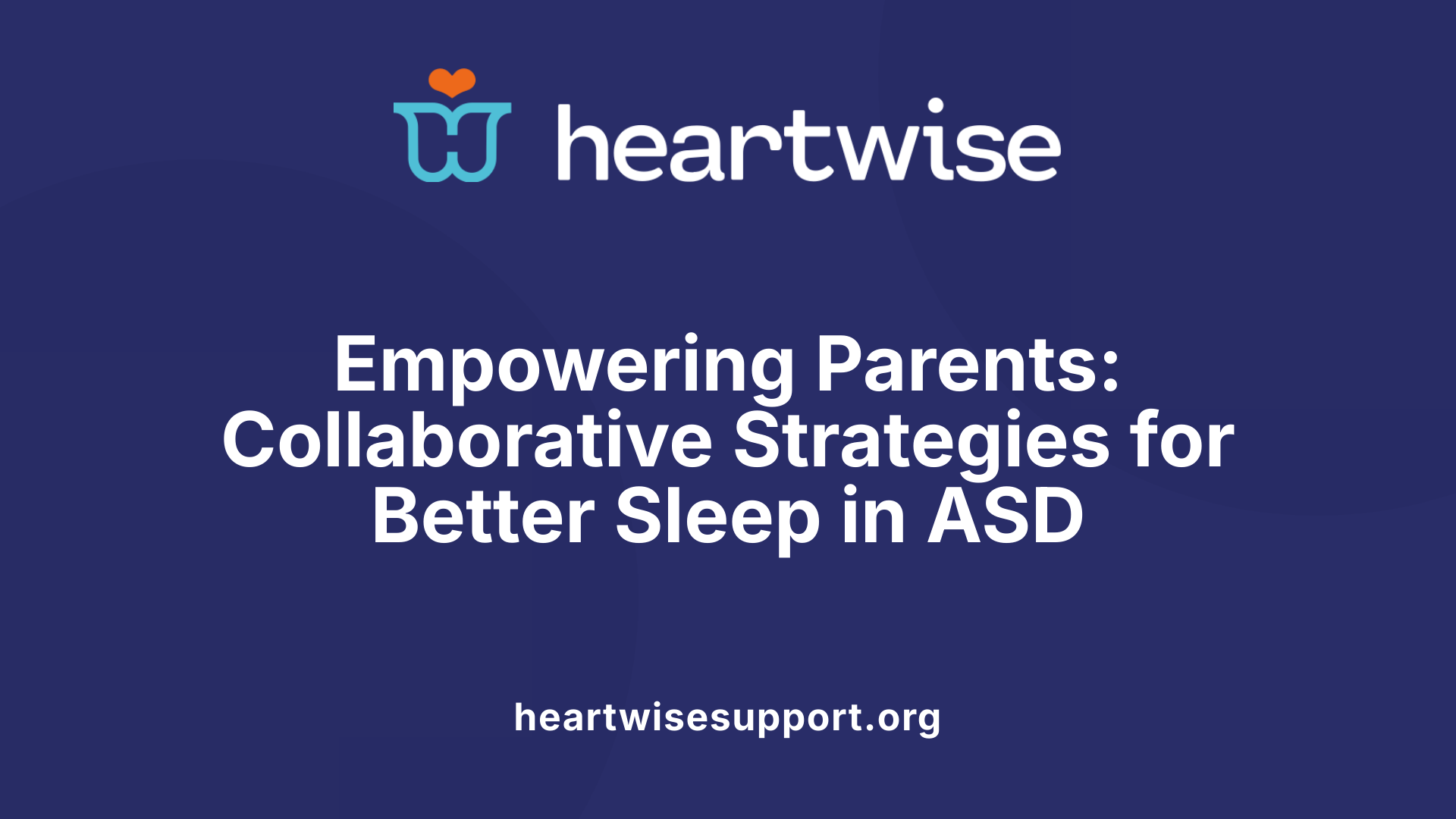
How can parents be effectively educated to implement ABA techniques for their child's sleep issues?
Educating parents is a cornerstone of successful sleep interventions for children with autism. Parents are trained to understand the nature of sleep problems, including common challenges such as difficulty falling asleep, night wakings, and early rising. They learn how to establish consistent bedtime routines, such as baths, reading, or calming activities, that serve as cues signaling bedtime.
Parents also receive guidance on using visual schedules and social stories to prepare the child for sleep. Training emphasizes the importance of positive reinforcement—praising or rewarding the child when they exhibit desired sleep behaviors like staying in bed or calming down.
In addition, parents are taught how to apply behavioral techniques, including graduated extinction and bedtime fading. These methods involve systematically reducing incentives for resisting sleep and adjusting sleep schedules gradually to match the child's needs.
To maximize effectiveness, parent training sessions often include demonstrations, role-playing, and ongoing coaching. Using sleep diaries and logs helps monitor progress, identify patterns, and tailor ongoing behavioral strategies.
Why is consistent response to night wakings and resistance crucial?
Children with autism often exhibit resistance or night wakings that can interfere with sleep routines. Consistency in responses helps the child learn that nighttime behaviors will be responded to predictably, reducing confusion and anxiety.
For example, if a child wakes frequently, responses like gentle reassurance, brief comforting, or systematic extinction should be applied uniformly. Inconsistent responses may inadvertently reinforce night wakings or resistance, prolonging sleep difficulties.
Structured responses also include setting clear expectations and using visual cues or timers to signal when it's time to return to sleep. Consistency helps the child develop a sense of security and understand manageable limits, which can decrease resistance over time.
How does collaboration between therapists and families ensure successful treatment adherence?
Successful sleep interventions require close collaboration between behavioral therapists and families. Therapists work with parents to identify triggers for sleep resistance, develop personalized routines, and select appropriate reinforcement strategies.
Regular communication allows therapists to monitor progress, address challenges, and modify plans as needed. Parents are encouraged to ask questions, share observations, and participate actively in the therapy process.
This partnership ensures that behavioral strategies are implemented correctly and consistently at home. It also fosters parental confidence in managing sleep issues and promotes adherence to recommended practices.
Furthermore, involving other healthcare providers—such as pediatricians or sleep specialists—enables a comprehensive approach, ruling out medical conditions and ensuring that behavioral interventions are complemented by medical support if necessary.
What methods are effective in applying ABA techniques to improve sleep?
Effective application of ABA to improve sleep involves establishing consistent bedtime routines, using visual cues, and applying behavioral strategies like graduated extinction, bedtime fading, and scheduled awakenings.
Reinforcement techniques reward desired behaviors, such as independently falling asleep or staying in bed. Sensory management, including calming activities or modifications to the sleep environment, addresses sensory sensitivities.
Assessment tools, like sleep diaries and questionnaires, guide individualized treatment plans, which include addressing sleep anxiety and sensory issues.
Teaching self-soothing skills and fading caregiver presence promote independence, while functional communication training helps children express needs more appropriately, reducing night disruptions.
Therapists and parents work together to implement these methods, monitor progress, and adjust strategies based on the child's evolving needs.
How can collaborative training and tailored approaches enhance sleep outcomes?
Collaborative training ensures that parents understand and are comfortable applying ABA techniques, which increases consistency and effectiveness. Tailored approaches consider the child's unique triggers, sensitivities, and behaviors, making interventions more relevant and sustainable.
When parents and therapists share information and strategies, they can identify what works best for each child, leading to more rapid improvements.
Additionally, ongoing support and education empower parents, reduce frustration, and foster a proactive approach to managing sleep challenges.
In summary, combining structured behavioral strategies with active parent involvement and professional collaboration creates a supportive environment that promotes healthier sleep patterns and overall well-being for children with autism.
Conclusion: Embracing ABA for Better Sleep Outcomes
What are the benefits of applying ABA techniques to sleep problems in children with autism?
Applying Applied Behavior Analysis (ABA) techniques to sleep issues in children with autism offers numerous advantages. One primary benefit is the establishment of consistent and healthy sleep habits. Techniques such as bedtime fading, positive reinforcement, and visual schedules help create predictable routines, which can significantly reduce the time it takes for a child to fall asleep (sleep onset latency) and extend total sleep duration.
ABA strategies are highly practical and easy for parents to incorporate at home. This ease of implementation fosters high treatment fidelity—meaning the strategies are applied as intended—and enhances social validity, as parents see tangible improvements in their child's sleep patterns.
Beyond improving sleep quality, these interventions often lead to reductions in other challenging behaviors, such as aggression or self-injury, which may worsen due to sleep deprivation or disturbances. Better sleep has a positive ripple effect, improving daytime alertness, enhancing social interactions, and supporting overall development.
Furthermore, implementing ABA techniques promotes independence in children by teaching self-soothing and self-regulation skills. For example, techniques like graduated extinction or the use of a sleep pass help children learn to fall asleep and stay asleep independently.
Using these evidence-based methods also allows for personalization. Therapists can adjust strategies based on a child's specific needs and behavioral patterns, ensuring a more effective and tailored approach. Regular monitoring through sleep diaries and direct observation helps track progress and facilitates timely modifications.
Overall, adopting ABA techniques to address sleep challenges in children with autism can lead to significant improvements in sleep habits, reduce behavioral disruptions, and enhance overall quality of life. These benefits extend beyond sleep, supporting broader developmental goals and fostering greater independence and well-being for children with autism.
Paving the Way for Restful Nights and Improved Quality of Life
Incorporating ABA techniques into sleep interventions for children with autism is a powerful, evidence-based approach that addresses the learned nature of sleep problems. Through structured routines, reinforcement, environmental modifications, and parent training, ABA can help children develop healthier sleep habits, reduce bedtime resistance, and address sensory and anxiety-related challenges. The collaborative effort between behavioral therapists and families, guided by ongoing data collection and individualized strategies, creates a pathway toward restful nights and more meaningful daytime interactions. Embracing these techniques can significantly improve not only sleep quality but also overall developmental progress and family well-being, opening the door to brighter, more restful futures for children with autism.
References
- Regulating Sleep - Association for Science in Autism Treatment
- Recommendations for Identifying Sleep Problems and Treatment ...
- Home-Based ABA Therapy for Better Sleep for Children with Autism
- How ABA Can Improve Your Child's Sleep - Alcanzando
- Home-Based ABA Therapy for Better Sleep for Children with Autism
- Parent-Implemented Bedtime Fading and Positive Routines for ...
- Recommendations for Identifying Sleep Problems and Treatment ...
- Regulating Sleep - Association for Science in Autism Treatment
- Sleep Disorder Treatments | NHLBI, NIH











